More Web Analytics for Content Editors
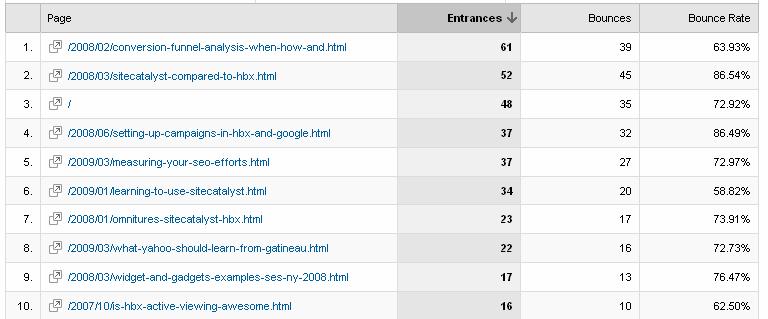
Well I’d been writing the previous post for ages and decided that it was time to cut it in half and write one half that dealt with the metrics that content editors use and the second half was going to talk about how to use those metrics to work out the best way of creating new content. This is essentially the crux of the matter is more or less what I wrote at the bottom of the post. We want to be able to use the analytics we have on our existing content to work out how we should write or edit our content. Also we need to work out how we are going to use that information to market our content to get the most visits and the best conversion, whatever that may be (and remember that you don’t have to measure conversion in a conventional manner if you are not selling anything per se). I think this is the process that the content editors should take when they have a subject to write about:
1. Find content on a similar subject
This may sound a little odd at first, but if you are writing a new bit of content, then you want to look back at your old bits of content. No really, that is a great place to start. Particularly you want to find things that were around the same sort of subject. This is where having a good taxonomy will come in useful because you’ll be able to search through your archives in a better way.
Remember that taxonomy doesn’t mean navigation structure. Your taxonomy should be a series of words that describe the content (like the ones on the left hand side of this blog), whereas you navigation structure should be grouping similar bits of content into a navigational structure that the user will understand.
Using the taxonomy approach it means you should be able to cut across many ways to find similar content. Particularly you’ll be looking for where the subject matter is similar or the same and/or where the topic has been similar or the same. Eg if you are writing about the measuring SEO with Omniture tools, then you should look at your other SEO content and your other Omniture content.
2. Find the content in your web analytics software
This gives you a good overview of how your content was accessed and what people did with it. Particularly of importance is the entries v visits. If you have many more visits to entries, then that implies that previously the users found the content from elsewhere on your site. If virtually all your visits entered the site at that page, it shows that they were on other websites when they found your article.
3a. More people found your page through your site than from other sites
This means that you need to look at the sort of pages that they got traffic from. This is really easy in virtually all web analytics tools. You don’t need to go looking at all the paths, you just need to look at the previous page report for this page:
In Google Analytics you need to choose your page and then click on the ‘Analyse’ drop down to choose Navigation summary. It’ll show you how many visits came from external sources again and how many came from internal sources. As you can see in my example, most of my visits coming internally came from one particular other bit of content. When trying to drive traffic to a page, you need to explore the possible avenues of getting people to the page by getting those links in other bits of content.
Can you get more links on this old page? Just putting a new one at the end as a ‘related link’ might help.
Why did the piece of content you are looking at work so well with the other bit of content? Can you find some similar content for your new piece of content?
In SiteCatalyst of course finding out these paths is even easier. You can click on your page name, then on paths and then previous page.
3b. More people found your page through other sites than from your site
I’m fairly confident that this is the most likely situation for most of your content. Given now the increased use of Google, many users will just be searching for stuff and your site will pop up. Alternatively you’ll have got traffic from a news aggregator or even better some nice chap will link to you from his blog. In this case, you really want to know what those sites are. This is where you can use the fact that other sites have linked to you in the past to help build links for your new bit of content. Of course, it does no harm for your research for your new bit of content if you can find related analysis on the web.
And of course if you put a link to their content in your content, it isn’t going to encourage them to link back to you at all. No siree. Nope, not even if you send them an email and tell them. I wouldn’t advise doing that. Or if it is a blog, don’t put a comment up and tell them that you found it interesting and you’ve just written something else with a link.
I don’t think I can stress enough that we aren’t in a ‘build it and they will come‘ world. You’ve got to market your website. If that means going out begging, stealing and borrowing links where ever you can, that is perfectly fine. The more people who read your content, the more links you get, the better Google thinks you are an pushes you up the rankings.
If you do discover that the majority of the traffic last time was from google – look at the search terms:
Find out what sort of things that you can be writing about. These key terms will help you pick up long tail traffic. Especially if you link back to the content with those keywords in anchor text. Particularly see how this fits into your keyword footprint.
4. Look at what links people click on in the content
A long time ago I wrote about how active viewer was awesome. Well HBX may well be near on defunct, but that doesn’t mean that there aren’t new toys to play with. In Omniture you have the equally brilliant clickmap. I have to say, it’d be nice if Omniture could update this at least so that they could give it the right look and feel to fit in with v14, but it does its job still:
I have to say I like this tool better than active viewer. Probably because Active viewer suffered from one of the issues that you ended up having the same anchor text repeatedly on a page and then it would group them all as one. With clickmap, they describe the location of the link as well as the url, and you get individual figures. Admittedly if you try and view it in any other format than on screen it becomes near on useless for dynamic sites and sites without a good url naming structure.
Why is this important? Well, really this is all about ‘persuasion architecture‘ and ‘scent‘. Your pages are very much part of a journey that a user takes. This journey doesn’t begin when someone enters your site at the home page and exits having bought your product. The journey begins at the very first tentative step of turning on the computer. The user doesn’t want their journey interrupted, but if they feel that it is there is a very easy option in the back button.
So that means that you are looking at building a page that gives the user the right set of links on the page for the place that they came from. By analysing the links on the previous content, you can work out for that article, what type of things people were interested in. This is key – you are trying to get your users to stay longer on the site. They’ll get a better impression of your brand and are more likely to convert (buy, sign up, etc) if they are on the site. If the content has a high bounce rate, the users haven’t seen enough to want to convert and give you money.
That back button is very powerful. Be wary of it. Make sure you know how you are going to market your content before you write it so that you can get the best links in it. If you have personas this can be built in here as well. Writing content on the web isn’t just about writing good, readable content. It’s about tailoring it for a very niche audience and providing a very valuable added extra.

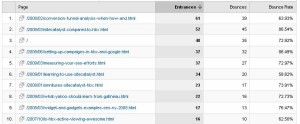
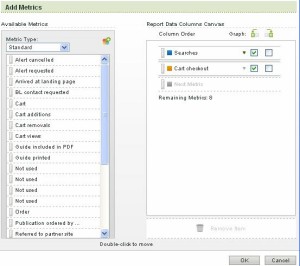
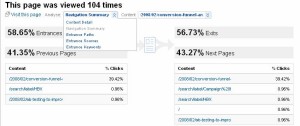
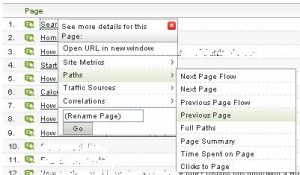
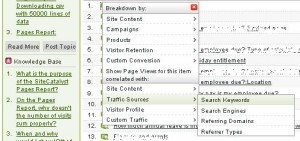
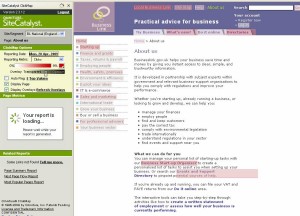
Leave a Reply